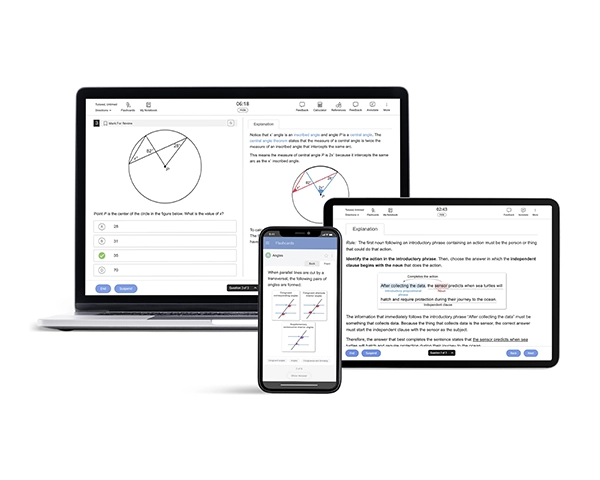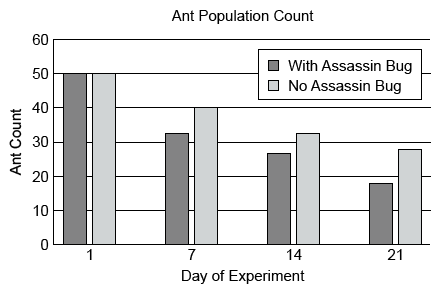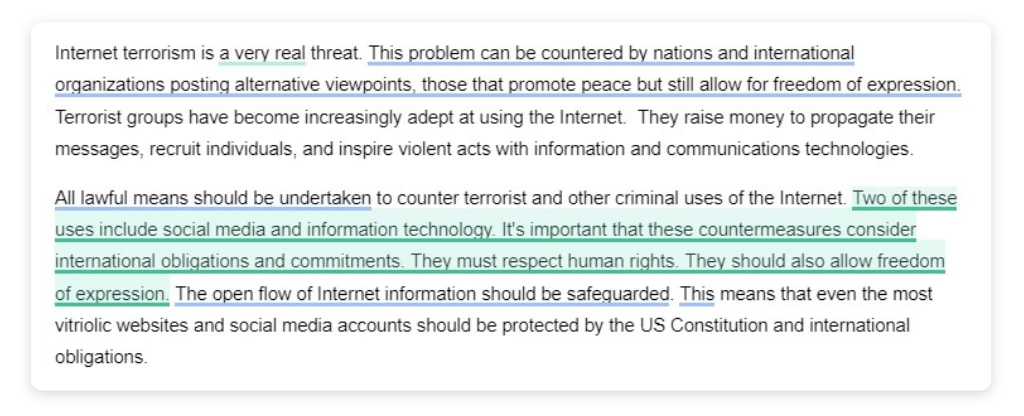As students gear up for the Digital SAT®, it’s common for them to underestimate the difficulty of the Reading & Writing section given that there’s no fixed syllabus. From misinterpreting passages to rushing through questions, students make many mistakes that significantly impact their scores.
Additionally, failing to learn effective test-taking strategies and committing careless mistakes can contribute to the low Reading & Writing scores on the Digital SAT. Most careless mistakes in this section occur for two major reasons: a lack of time management and insufficient focus during study targeting specific areas.
To help you with time management and identify areas for improvement, we’ve compiled a list of common errors students make on the Digital SAT Reading and Writing questions, along with actionable advice on how to avoid them.
Sacrificing Accuracy for Speed
Don’t panic about the time crunch and rush through the questions; instead, take a confident approach to answer each question accurately and efficiently.
Overlooking the Answer Choices
Explore each answer choice by using the process of elimination, empowering yourself to find the most fitting solution.
Being Unprepared to Interpret Charts and Graphs
Make sure your chosen answer is backed up by standard English grammar rules, and you'll be well-equipped to interpret charts and graphs with confidence.
Inaccurate Application of Ideas
Take a thoughtful approach—evaluate the credibility of the evidence before confidently choosing an answer that aligns with the question.
Not Learning the Fundamentals
Embrace a growth mindset—read more, take note of your mistakes, and spend time learning the fundamentals of standard English grammar.
Don’t panic about the time crunch and rush through the questions; instead, take a confident approach to answer each question accurately and efficiently.
Explore each answer choice by using the process of elimination, empowering yourself to find the most fitting solution.
Make sure your chosen answer is backed up by standard English grammar rules, and you'll be well-equipped to interpret charts and graphs with confidence.
Take a thoughtful approach—evaluate the credibility of the evidence before confidently choosing an answer that aligns with the question.
Embrace a growth mindset—read more, take note of your mistakes, and spend time learning the fundamentals of standard English grammar.
Mistake 1: Sacrificing Accuracy for Speed
The most common mistake students have historically made on the paper-SAT is to panic about the time crunch and rush through questions. This causes them to overlook grammar, spelling mistakes, syntax, and punctuation errors and lose easy points, which could hurt their final test score. Although the Digital SAT is a new test altogether, the skills tested are similar and avoiding these mistakes can make a big difference to your final Digital SAT score.
We recommend:
-
Focusing on time management skills
Don’t let the time constraint bog you down! Here’s what you can do to manage your time effectively without compromising on your test performance:-
Read the prompt, understand, and analyze the question before you start reading the passage
While this section comes with short passages, they are complex and will require you to skim important information. Reading and understanding the prompt first will help you know what information to look for while reading the passage, so you don’t waste time on irrelevant information. -
Do not stick to a question that stumps you
You’ll have 32 minutes to answer 27 questions in each module, giving you roughly 70 seconds per question. If you feel stuck on one question, move on to the next one and return to it later if you have time. You can always eyeball an answer choice rather than leaving it blank! -
Practice with timed tests as often as possible
Embrace the opportunity to practice with timed tests regularly. This will help you develop the habit of delegating time effectively and build the confidence to answer questions within the allotted time.
-
Read the prompt, understand, and analyze the question before you start reading the passage
Mistake 2: Overlooking All the Answer Choices
Because multiple answers could be correct, it’s crucial to read each answer choice. Rushing to select the first answer that sounds right and appears grammatically correct can harm your score. This error will typically occur when a student ignores grammar rules.
It is also common to answer the questions without interpreting the theme of the passage. It’s easy to get distracted by irrelevant details, but by understanding the theme, you can bring the central ideas and supporting details of the passage into focus. This will help you eliminate incorrect answer choices.
Here’s what we recommend:
-
Review the domain of the passage and identify which of the four content domains the passage aligns with. This will help you eliminate incorrect answer choices by focusing on what the question is actually testing you on. Empower yourself by understanding how each domain is tested on the exam:
- Information and Ideas: Tests how well you understand, think critically, reason, and use your knowledge. It also checks your ability to locate, understand, evaluate, and combine information and ideas from texts and visual aids like tables, bar graphs, and line graphs.
- Craft and Structure: Tests your ability to use important words in context, analyze texts, and connect thematically related texts effectively.
- Expression of Ideas: Tests your capacity to enhance written expression for improved effectiveness and to achieve particular rhetorical objectives.
- Standard English Conventions: Evaluates your skill in editing text by following the fundamental conventions of Standard English sentence structure, usage, and punctuation.
- Go through each answer choice by using the process of elimination instead of rushing through the answer choices or selecting one answer too quickly. You can do so by evaluating each answer choice on the basis of standard English grammar rules and picking the one that can be backed up by one or more grammar rules.
- Don’t let the “no change” option fool you! Many students overlook the “no change” option and focus on the other three answer choices, or vice versa. The phrase you’re being asked to rectify may already be grammatically correct. Remember that the “no change” option could be the correct answer choice for some questions but also be a way to trick you. Stay vigilant and consider all options!
Mistake 3: Being Unprepared to Interpret Charts and Graphs
The Reading and Writing section will also include prompts with graphs, charts and tables. You’ll have the opportunity to showcase your skills by picking the correct answer from the choices through interpreting and comparing the data presented. You’ll see that some answer choices are designed to confuse you, but with practice, you can master the art of interpreting data efficiently even within the exam’s time constraint.
These issues can happen if you do not spend enough time on practicing to interpret and study charts and tables during your test preparation.
We recommend you:
- Elevate your data analysis and language comprehension skills by practicing with charts, graphs, and tables.
- Transform challenges into strengths by taking as many practice tests as you can focusing on data analysis questions. This will help you get faster at solving these kinds of questions within the time duration as on the actual Digital SAT exam. With consistent effort, you’ll become proficient in handling these types of questions with ease.
Passage:
Wanting to discover the effect of assassin bug predation on ant populations, a student placed ants in two containers, one with an assassin bug and one without and counted the number of ants in the containers over 21 days. The student concluded that the reduced number of ants in the container with the assassin bug by day 21 was only due to the presence of the assassin bug.
Which choice best describes data from the graph that weaken the student's conclusion?
| A. The ant population count was the same in both containers on day 1. | ||
| B. The ant population count also significantly declined by day 21 in the container without the assassin bug. | ||
| C. The container with the assassin bug showed the greatest decline in ant population in the period between day 1 and day 7. | ||
| D. The number of ants on day 21 was lower in the container with the assassin bug than in the one without the assassin bug. |
Examine information in the graph and the text to determine which answer weakens the student's conclusion by introducing data contrary to it.
The student concluded that the assassin bug alone caused the decline in ant population. This idea would be weakened if something besides the assassin bug could be said to have caused the reduction of ants. Because the graph also shows fewer ants in the container without any assassin bugs from one week to the next, a decline in ant population occurred even when these predators were not present, which means the decline had another cause.
One answer provides information that weakens the student's conclusion: The ant population count also significantly declined by day 21 in the container without the assassin bug.
(Choice A) This answer doesn't indicate a reduction in the ant population in either container, so it cannot support or weaken the student's conclusion about the effect of assassin bugs on ant populations.
(Choice C) Stating when the greatest decline in the ant population within in the assassin bug container occurred does not weaken the student's conclusion that the assassin bug was the reason for the decline.
(Choice D) This answer indicates that the ant population declined more in the container with the assassin bug, which supports the student's conclusion.
Things to remember:
Look for an answer that weakens the student's conclusion by expressing a contradiction to it based on the information in the graph.
Mistake 4: Inaccurate Application of Ideas
Some prompts on the Digital SAT Writing Test will require you to evaluate sources based on whether they support or weaken a hypothesis or claim made in the short passages. However, there might be occasions where you’ll need to choose between multiple sources to support your claim, which can be puzzling.
Below are a few tips to help you apply ideas accurately:
- Evaluate the evidence in the passage and determine whether it supports your answer choice. A strategic approach is to go through each option and eliminate those lacking supporting evidence from the passage. If an answer choice doesn’t have evidence in the passage to back it up, it’s probably not the correct one. By systematically eliminating choices without evidence, you enhance your chances of identifying the correct and well-supported answer.
Let’s understand with an example:
Passage:
After studying art history in the 1980s, Camille Morineau noticed an underrepresentation of female artists in French art galleries and museums, despite France's reputation as a country where equality is highly valued. As reported by an arts journalist, when Morineau became a curator for some of the largest art museums in Europe, she worked to improve representation of female artists, not by merely including more works by female artists in exhibits, but also by organizing exhibitions emphasizing women's important contributions to global art.
Which finding, if true, would most directly support the journalist's claim?
| A. While curating for La Maison Rouge in France, Morineau organized the exhibit "CERAMIX: from Rodin to Schütte," which presented over 250 ceramic works, including pieces by female artists, that demonstrate the varied techniques used in creating ceramic art. | ||
| B. In the show "elles@centrepompidou" (Women at the Pompidou Centre), which was exhibited from 2009 to 2011, Morineau stored works created by male artists and filled the Paris museum with over 200 works of art by more than 75 female artists from across the world. | ||
| C. As director of the art collections and exhibits at Monnaie de Paris, in 2020 Morineau curated the exhibition titled "Kiki Smith" that presented a vast retrospective of this female artist's 40 years of work, including her drawings, sculptures, stained glass, tapestries, and engravings. | ||
| D. Morineau's influence was key to the creation of a documentary exhibition displayed at the 2021 Generation Equality Forum consisting of four parts—Creating, Reveal, Write, Unite—that explored the prejudices held about "women and creation" and the reasons why female artists have gone unrecognized. |
Identify the claim and determine what information would support it. Then, look for evidence in each answer choice that directly supports most of the ideas present in the claim.
Claim: Morineau strove to improve gender equality in art displays by
- exhibiting works by female artists AND
- emphasizing their contributions to global art.
The show "elles@centrepompidou" is an exhibit that exclusively features the works of women, and the inclusion of works by female artists from around the world highlights the global reach of those contributions. Therefore, the answer that most directly supports the claim is Choice B.
(Choice A) The CERAMIX exhibit emphasized a variety of ceramic art by female artists. Because it doesn't emphasize the contributions of women to global art, this answer doesn't support the entire claim.
(Choice C) While the Kiki Smith exhibit does improve female representation by spotlighting one female artist's work, it does not support the journalist's claim that Morineau additionally improved female representation by highlighting female artists' global contributions to art.
(Choice D) This answer choice does not support the journalist's claims about Morineau's efforts to improve representation through the inclusion of works by female artists or through highlighting their global contributions, as this is not an example of either.
Things to remember:
Analyze the examples presented in each answer choice to determine the one that supports the claim.
- Ask yourself: Is the evidence credible? Look for hints or statements in the passage that reflect on the credibility and reliability of the evidence presented before using it to defend your claim. Choose your response by considering the validity of the evidence and facts presented. If the hypothesis or claim lacks supporting evidence or data, recognize that it may be weakened. Additionally, steer clear of relying on generic information to bolster your thesis statement.
Let’s look at the passage below:
Passage:
A student performs an experiment testing his theory that Adalia bipunctata (a beetle commonly known as a ladybug) will eat more aphids as temperatures increase. He places ten ladybugs in a greenhouse with cool temperatures (a daytime temperature of 66°F and a nighttime temperature of 50°F) and another ten ladybugs in a greenhouse with warm temperatures (a daytime temperature of 76°F and a nighttime temperature of 58°F). The two groups of ladybugs were given the same number of aphids each day and monitored for one week.
Which finding, if true, would most directly weaken the student's hypothesis?
| A. The ladybugs in the greenhouse with cool temperatures ate significantly more aphids by the end of the experiment than the ladybugs in the greenhouse with warm temperatures. | ||
| B. The ladybugs living in the greenhouse with cool temperatures weighed significantly less at the end of the experiment than the ladybugs in the greenhouse with warm temperatures. | ||
| C. The ladybugs in the greenhouse with cool temperatures were significantly less active throughout the experiment than the ladybugs in the greenhouse with warm temperatures. | ||
| D. Significantly fewer of the ladybugs in the greenhouse with cool temperatures ate aphids than did the ladybugs in the greenhouse with warm temperatures. |
Locate the hypothesis and determine what evidence would weaken it.
Because the student theorized that ladybugs would eat more aphids in higher temperatures, the correct answer would need to reflect that the opposite is true. The answer containing an opposite idea states that the ladybugs in the greenhouse with cool temperatures ate significantly more aphids by the end of the experiment than the ladybugs in the greenhouse with warm temperatures..
(Choices B and D) Each of these answers would support, not weaken, the hypothesis that ladybugs in warm temperatures ate more than ladybugs in cool temperatures.
- Choice B: This answer states that the ladybugs in cool temperatures weighed less, implying that they ate less.
- Choice D: This answer states that ladybugs in cool temperatures ate fewer aphids than ladybugs in warm temperatures.
(Choice C) This answer could be used to indicate that ladybugs who eat less have less energy and are therefore less active, or it could mean that ladybugs who eat more are less active because they're full. Since the answer requires more context to determine if it weakens or supports the theory, it can't be the correct answer.
Things to remember:
Read the question carefully to determine the exact requirement(s) the answer must contain.
- Look for context clues when tackling questions that require you to select the most accurate word or phrase that complements the passage. In that case, you need to interpret how they are used in the context of the passage. Here’s how you can find context clues from a passage:
- Check for repeated or contrasting clues: Sometimes, while introducing a word, the author mentions its simpler synonyms or antonyms, as in the following two examples: (1) John is a rich prodigal. He’s always been a spendthrift. (2) The new director, Roger, is the quintessential technocrat. You will never find him vouching for something mediocre.
- Look for definitions or examples: Typically, a new word or phrase in a passage is followed by its related examples or definition. Example: (1) Stella is more of an ambivert. She isn’t as social as her younger sister or as reserved as her parents. (2) At the biodome, visitors can find a number of arboreal animals like monkeys, sloths, koalas, squirrels, tree snails, etc. By paying attention to these clues, you’ll enhance your ability to accurately choose the right words or phrases that fit the passage seamlessly.
Mistake 5: Not Learning the Fundamentals
You should know that spoken English tends to contain dialects and slang and can vary from place to place. It is not the same as standard written English.
We recommend:
-
Reading more
Consistent reading is the most effective way to improve your grammar skills. Immerse yourself in various materials like books, newspapers, magazines, or any other well-written content that captures your interest. - Practice reading across different genres or writing styles (like journalistic, academic, or fiction). This approach broadens your exposure to specialized and subject-specific vocabulary. Keep tabs on the author’s origin to discern their tone and style, especially if they are using modern American English, which is the focus of the exam.
- Consider the author’s timeline, and purpose when selecting your answer. As you read, analyze the cultural context in which the passage was written. Understanding whether the author wants to inform, persuade, or entertain, will help you avoid making incorrect assumptions.
- Pay attention to sentence structure, punctuation, spelling, and grammar usage. With a consistent reading habit, you’ll begin to identify the crux of every piece of content and develop an intuitive sense of what well-written sentences look like.
-
Focus on prime topics like:
- Verbs – tense, subject-verb agreement, infinitives
- Combining Sentences – full, partial
- Apostrophes – possession, explanatory clauses
- Concision – redundancy, wordiness
- Precision – phrase, denotation
-
Review your errors during your study sessions and take note of them
Doing so will help you focus on your growth opportunities (spelling, use of prepositions, antecedents, etc.), and you’ll be able to boost your score in no time!
Use online grammar tools as you write. Tools like Grammarly and Hemmingway can enhance your understanding of standard grammar conventions. Consistent practice and exposure to good grammar will help you improve. Here’s how Grammarly can help you improve on vocabulary usage, sentence structure, style, and clarity:
For the passage above, let’s look at a couple of points among others:- “Very real” can be replaced by “genuine,” because the intensifier “very” modifies the weak adjective “real.” Using “genuine” makes it look more precise and concise.
- In the 2nd sentence, “, those” can be simply deleted to make the sentence flow smoother and easier.
You can also use AI tools like ChatGPT to take note of your grammar and spelling mistakes. Just plug in a passage you’ve written with a prompt to “find grammar mistakes.” The program will point out areas you need to update.
-
Solidify your spelling and punctuation knowledge
Errors in spelling and punctuation can be addressed through regular writing practice and taking note of the words you commonly misspell. Using flashcards and online tools, as mentioned above, can help you memorize the correct spelling of those tough words.

References
- Digital SAT Sample Questions and Explanations. (n.d.). satsuite.collegeboard.org. Retrieved August 2023, from https://satsuite.collegeboard.org/media/pdf/digital-sat-sample-questions.pdf
- The Digital SAT® Suite of Assessments Specifications Overview. (n.d.). satsuite.collegeboard.org. Retrieved August 2023, from https://satsuite.collegeboard.org/media/pdf/digital-sat-test-spec-overview.pdf
- How the Digital SAT Is Structured – SAT Suite | College Board. (n.d.). https://satsuite.collegeboard.org/digital/whats-on-the-test/structure
- Assessment Framework for the Digital SAT Suite. (n.d.). satsuite.collegeboard.org. Retrieved August 2023, from https://satsuite.collegeboard.org/media/pdf/assessment-framework-for-digital-sat-suite.pdf






